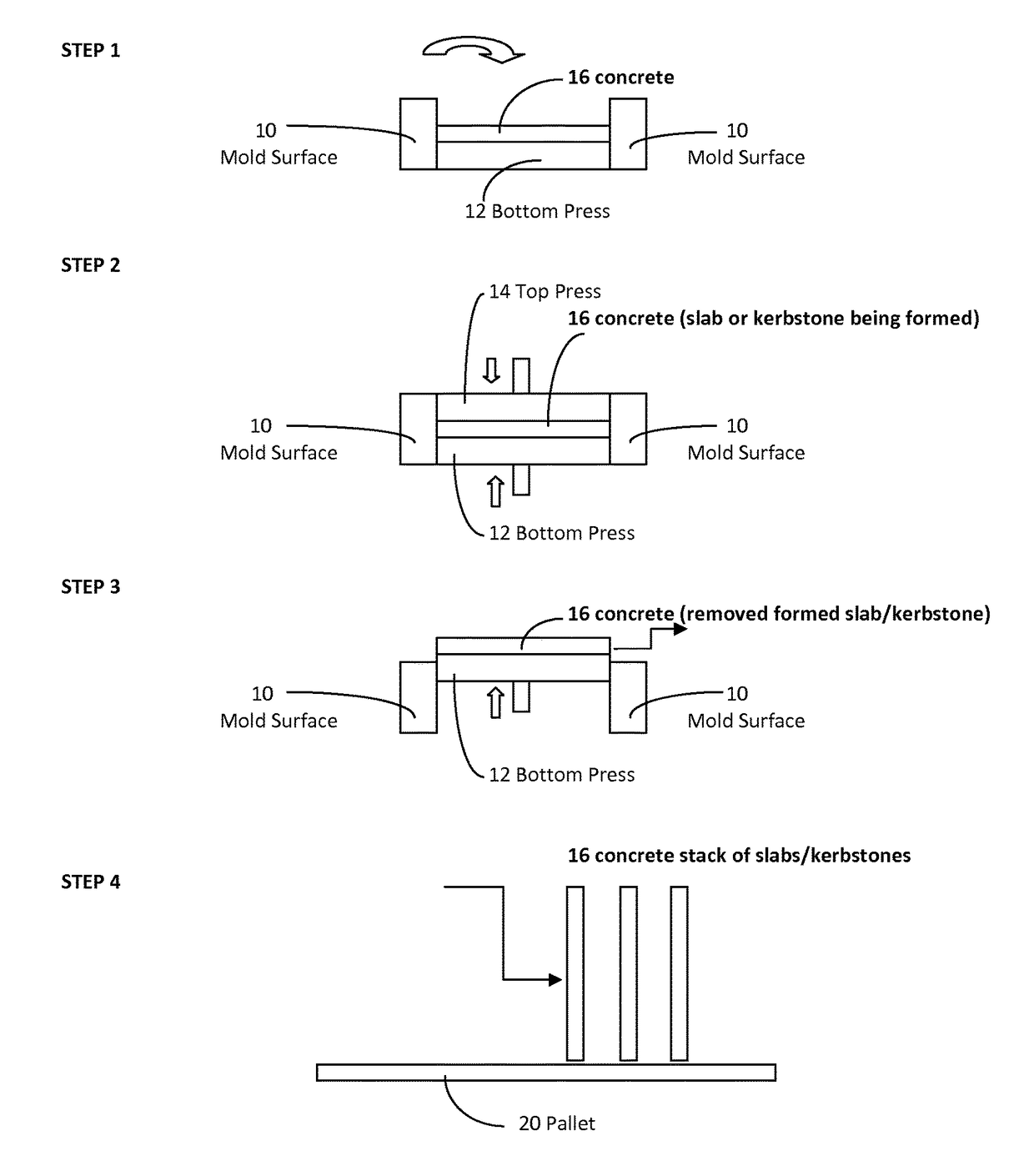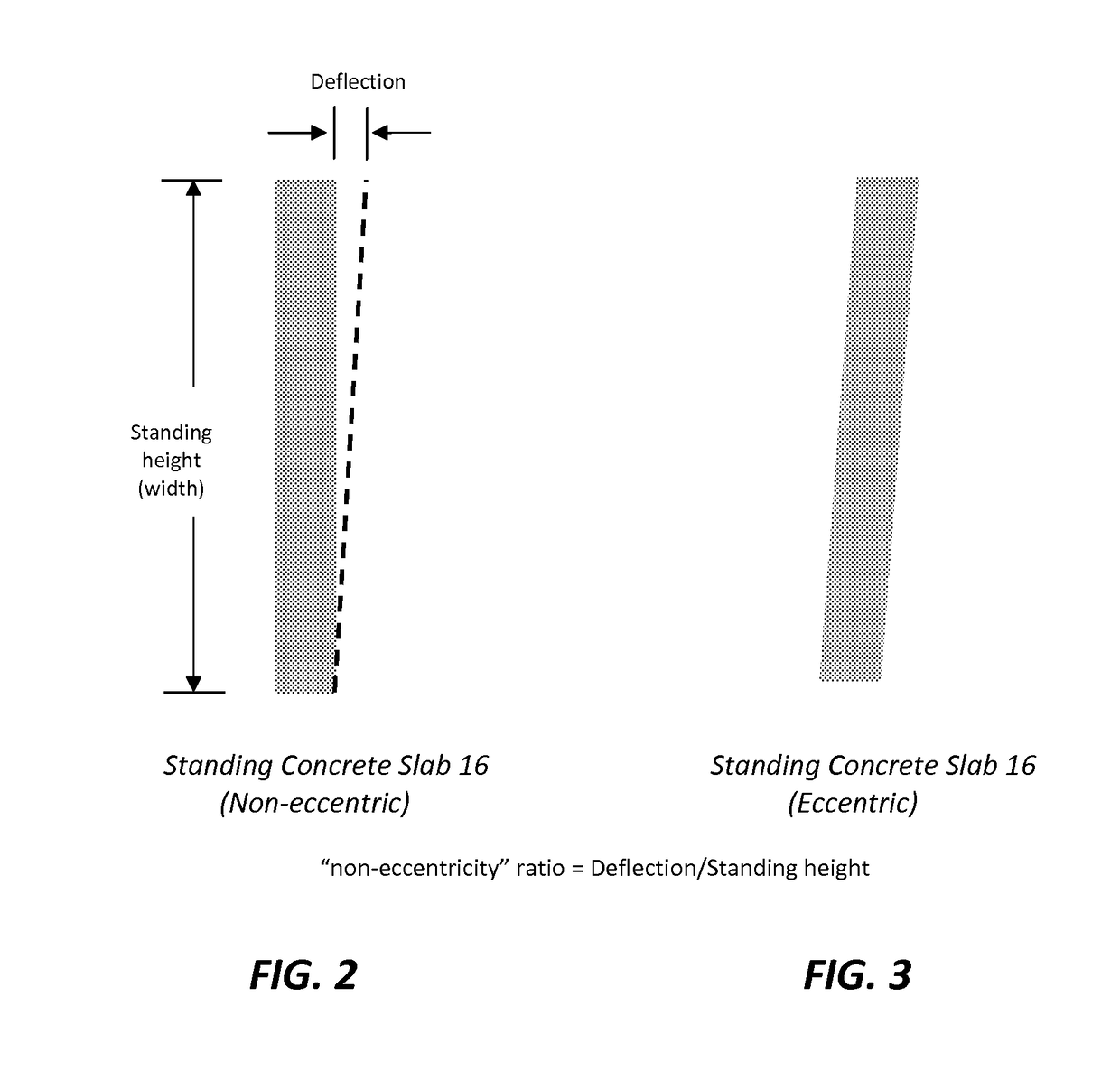Wet Press Concrete Slab Manufacturing
a technology of wet press and concrete, which is applied in the direction of manufacturing tools, sustainable waste treatment, solid waste management, etc., can solve the problems of affecting the production process, increasing the pressing time, and rare use of additives, and achieves excellent non-eccentricity and low permeability.
- Summary
- Abstract
- Description
- Claims
- Application Information
AI Technical Summary
Benefits of technology
Problems solved by technology
Method used
Image
Examples
example 1
[0053]Several admixture compositions were formulated and employed in concrete mixes for making wet press concrete slabs in accordance with the present invention.
[0054]The concrete slab mix contained crushed fines and sands in the amount of 1240 kg / m3 and having up to 4 mm diameter, along with 310 kg / m3 of cement and fly ash, and further components as described hereinbelow.
[0055]The concrete slab mix was further formulated using a colloidal silica product that is commercially available from W. R. Grace & Co.-Conn., Columbia, Md., USA (“GRACE”) under the brand name LUDOX®. The formulation (labeled as “EXP 14-1” for identification purposes in the chart provided below) contained 28.5% solids weight of the LUDOX® colloidal silica and 5% solids weight of tetrahydroxyethylethylenediamine (“THEED”) (CAS Number 140-07-8, C10H24N2O4).
[0056]Another concrete mix was formulated (labeled as EXP 14-3) using 28.2% solids weight of GRACE LUDOX® colloidal silica and 4% solids weight of triisopropanol...
PUM
| Property | Measurement | Unit |
|---|---|---|
| hydraulic pressure | aaaaa | aaaaa |
| particle size | aaaaa | aaaaa |
| humidity | aaaaa | aaaaa |
Abstract
Description
Claims
Application Information
 Login to View More
Login to View More - R&D
- Intellectual Property
- Life Sciences
- Materials
- Tech Scout
- Unparalleled Data Quality
- Higher Quality Content
- 60% Fewer Hallucinations
Browse by: Latest US Patents, China's latest patents, Technical Efficacy Thesaurus, Application Domain, Technology Topic, Popular Technical Reports.
© 2025 PatSnap. All rights reserved.Legal|Privacy policy|Modern Slavery Act Transparency Statement|Sitemap|About US| Contact US: help@patsnap.com



